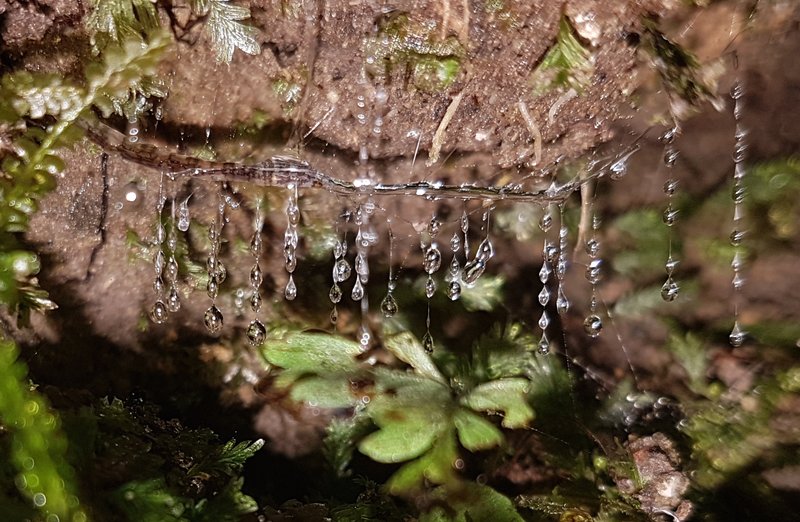
Now, here’s the thing: it’s not just a random pairing. The relationship between glow worms and leaf litter is a beautiful dance of nature. Think of it like a symbiotic partnership—each element supports the other. So, let’s delve into this captivating world and uncover how glow worms find refuge and sustenance in leaf litter.
What Are Glow Worms?
Glow worms are often misunderstood creatures. While many of us might think they’re all the same, they actually belong to different species. In Australia and New Zealand, for instance, the famous *Arachnocampa* species is well-known for its shimmering blue-green light. These creatures are larvae of a type of fly and spend most of their lives in a larval state, which can last for up to a year.
But what’s really remarkable? Their bioluminescence! This glow is produced through a chemical reaction in their bodies. It’s like they’re carrying little lanterns, beckoning their prey. As these larvae hang from silk threads in a dark, damp environment, they attract insects—a pivotal part of their diet.
The Role of Leaf Litter in the Ecosystem
Leaf litter isn’t just a pretty addition to the forest floor; it plays a crucial role in the ecosystem. When leaves fall from trees and accumulate on the ground, they create a rich layer of organic matter. This layer decomposes over time, facilitating a process that returns nutrients to the soil.
Here’s the scoop: leaf litter provides a unique habitat. It creates a moist environment that helps maintain humidity levels essential for various organisms. For glow worms, this moist atmosphere means they don’t dry out. The layers of decomposing leaves also offer a bounty of food sources, including the tiny insects that glow worms feed on.
How Glow Worms Use Leaf Litter
So, how exactly do glow worms interact with leaf litter? Well, they use it essentially as their home base. Picture it: the glow worms set up their silk threads right above the leaf litter, where they can easily snag their dinner as insects wander by. The decaying leaves also help maintain a suitable microclimate that is warm and damp—perfect for sustaining the glow worms’ delicate lives.
Moreover, the leaf litter acts as a protective shield. When daylight breaks or when other predators are near, the glow worms retreat to the safety of the leaves. You might be wondering how they manage to thrive because of something we often overlook. It’s all about their ability to blend into the environment, lying just above the leaf litter, effectively camouflaging themselves.
The Importance of Habitat Conservation
In recent years, habitat loss due to urban expansion and agriculture has threatened glow worm populations. Preserving areas rich in leaf litter is essential not just for glow worms but for the entire ecosystem. A healthy forest floor supports a diverse range of wildlife, and without it, many species could face decline.
We can’t forget about the impact of climate change, either. Changes in temperature and moisture levels can significantly affect both leaf litter accumulation and glow worm habitats. If these habitats disappear, the delicate balance of the ecosystem might tip, leading to greater challenges for not just glow worms but all forest inhabitants.
Supporting Glow Worm Habitats
If you want to aid glow worms in their mission for survival, consider simple actions. When hiking or enjoying nature, stick to designated paths to minimize disturbance to the leaf litter. Avoid picking leaves or disturbing the ground.
In your backyard, you can create a haven for these creatures. Plant native trees and allow some leaves to accumulate on the ground. This encourages decomposition and helps maintain moisture levels. You might be pleasantly surprised at the wildlife that visits!
What Happens When Leaf Litter is Disturbed?
When leaf litter is disturbed, it can lead to detrimental effects for glow worms and other forest inhabitants. Imagine digging through a carefully built house. That’s how it feels for them when their habitat is disrupted. Even minor disturbances can cause the glow worms to lose their food source and shelter, leading to population declines.
Additionally, with the disruption of leaf litter, the oxygen levels in the soil can change. This can impact the decomposition process essential for the health of the ecosystem. A healthy layer of leaf litter ensures that soil remains rich in nutrients and suitable for various forms of life.
The Magic of Glow Worms and Leaf Litter
The connection between glow worms and leaf litter is nothing short of magical. It’s a reminder of the intricate relationships in nature that we often take for granted. By understanding and appreciating this harmony, we can help protect these delicate ecosystems.
When you spot a glow worm twinkling in the dark, remember: it’s not just a tiny light in the forest. It’s a symbol of resilience and a testament to nature’s craftsmanship. So, the next time you venture into a forest, take a moment to appreciate the leaf litter beneath your feet—it’s doing so much more than you might think!
In brief, the survival of glow worms is deeply tied to the leaf litter that houses them. By protecting and preserving these environments, we are ensuring that the dance of light continues to enchant generations to come.

